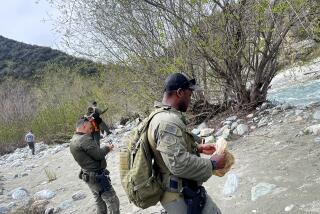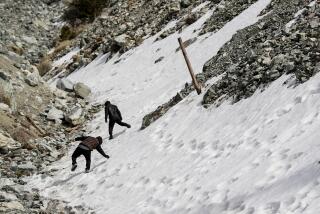Lost on the hiking trail? 6 ways to improve your chances of getting found

Eugene Jo, 73, knows what it feels like to be desperate and alone in the forest. He got separated from family members on a June hike in the rugged Mt. Waterman area northeast of Los Angeles. Seven days later, Jo heard the voices of rescuers as he lay nearby. “He said it took everything he had to roll over on his hands and knees and yell for help, and that’s when the rescuers heard him,” Janet Henderson of the L.A. County Sheriff’s Department’s search and rescue team told media outlets.
Less than a month later, Sheryl Powell, 60, went missing for four days in the Ancient Bristlecone Pine Forest, a remote spot in California’s White Mountains near the Nevada border. The Huntington Beach woman said she had run into the woods to outrun a knife-wielding man who threatened her. The same day Powell disappeared, Barbara Thomas, 69, vanished during a short hike with her husband in the Mojave Desert northeast of Joshua Tree. She was last seen wearing a bikini and walking on a blazingly hot trail without any supplies, officials told the media. The search for her was called off after eight days.
It’s the time of year when summer hiking is at its peak — and so are streams of headlines about missing hikers. Wandering off the trail is the most common reason people get lost, according to Smokymountains.com, which examined more than 100 news reports of missing hikers.
You never want to be that person. And if you do get lost, you want to stay safe and get found. Quickly. The best advice, of course, is not to go missing in the first place.
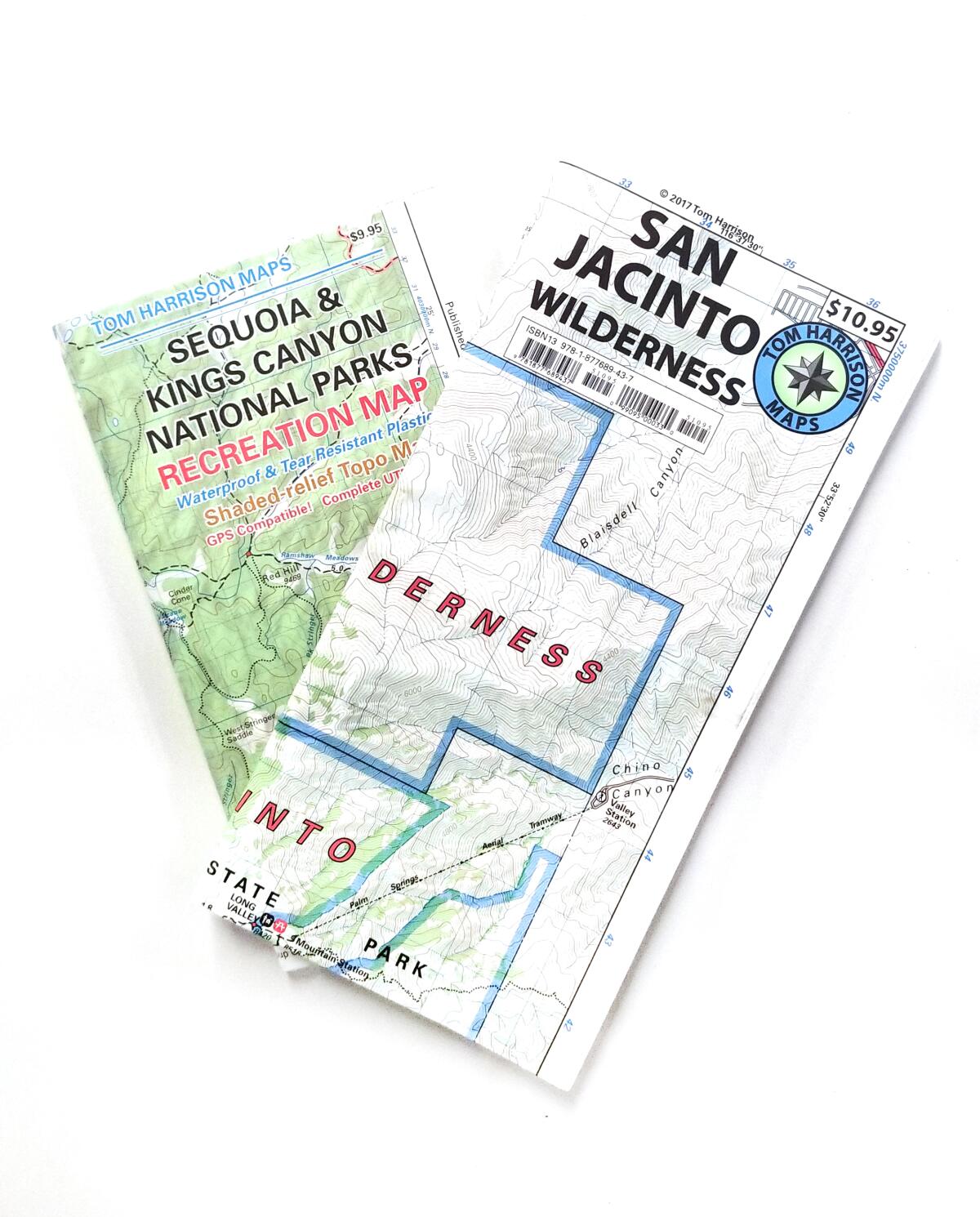
Know where you’re going
“We teach ‘stay found,’” says Jane Simpson, chairwoman of the Sierra Club Angeles Chapter’s Wilderness Travel Course, a popular outdoor skills course with a strong emphasis on navigation. “I can’t emphasize enough the importance of learning navigation basics, which really boils down to common sense. Even if you don’t take map-and-compass training, know where north and south are, where you started, and basically where you are in the world.”
By that Simpson means paying attention to your surroundings, which begins before you leave your house. Look at an online map or go to Google Earth for a basic orientation. Will you be hiking a ridgeline? Dropping into gullies? What prominent peaks are visible in the vicinity? Any stream crossings?
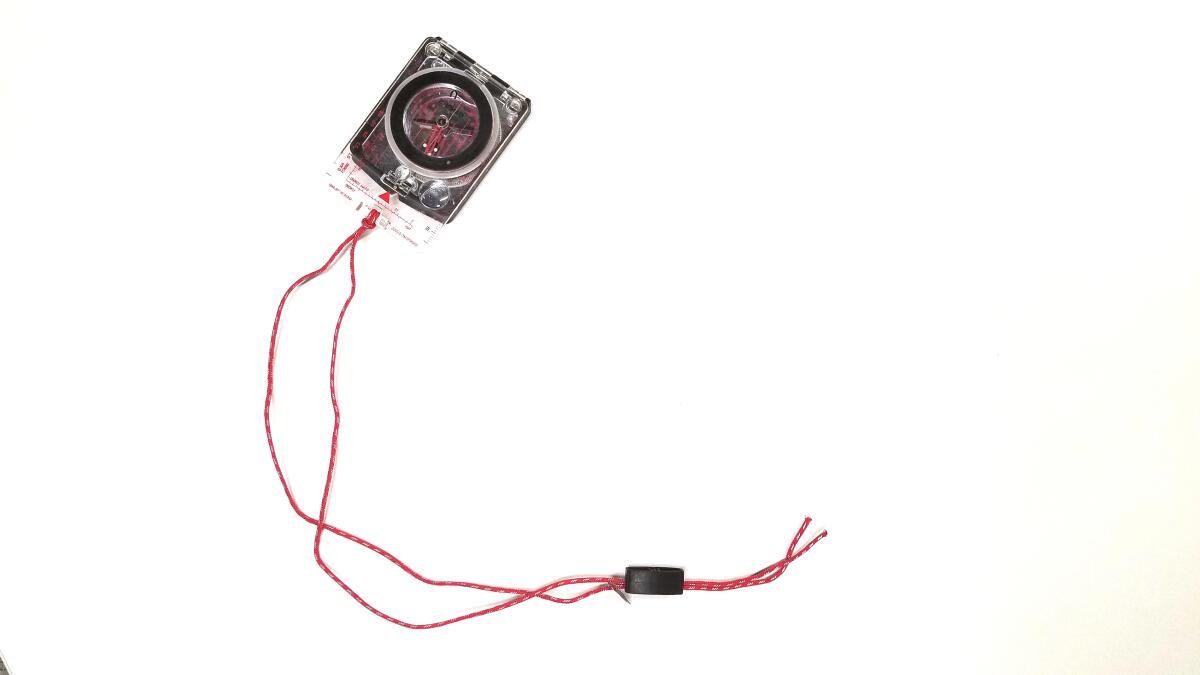
On the trail, carry a paper map, she advises, even if you use a smartphone app such as Gaia GPS that tracks your route. “Even a sketchy map will point out major features: Mountain X, River Y. Though you do need to know how to orient it. You need to know north and south.” Hint: If nothing else, your phone’s compass app can supply that information. It’s also wise to review your route in advance. Know what intersections you’ll encounter, and if you’re hiking a loop, know the names of every trail.
Barbara Fortini, president of the Sierra Madre Search and Rescue Team, urges hikers to be aware. “Pay attention that you’re on the [right] trail. Our mountains have a lot of game trails, or incorrect paths to ridges or bathroom spots. Don’t just stare down, look ahead. Does the trail look the same? Or is it getting more covered [with brush]?” And never take shortcuts; it could take you somewhere you don’t want to go and also creates a confusing path for future hikers.
Since a lot of hikes are out-and-back, meaning you return the same way you came, Fortini advises turning around periodically and making a mental note of the topography, especially trail junctions. That way things will look familiar on the way back. “Pick out a rock or tree and remember, ‘This is where I will turn.’ ” Even better, take photos to document key junctures.
Knowing where you are in relation to where you should be, as indicated by following a map, can keep you on course. It can also help you know when you’ve gone wrong, or something doesn’t feel or look right. When this happens, stop and look around. Retrace your steps to a point where you know you’re on course, or can see familiar landmarks. Should an emergency occur and you need to notify authorities, be the informed hiker who can provide critical details. “Not just, ‘There’s a pointy peak to my left,’ says Simpson, “but ‘I’m to the east of Mt. X.’ East, remember, is where the sun rises.”
Be prepared, alone or in a group
“Never hike alone,” advises firefighter Eric Sherwin of the San Bernardino County Sheriff’s Department Emergency Operations Division. “It’s always easier to sort things out with a buddy. Carry the right equipment. And tell somebody where you’re going and when you’ll be back.”
Sound advice like that often goes unheeded. Fortini says: “If you forget to notify someone in advance, and you have cell coverage, give someone a call. If you don’t, put a note in your car, face down (so as not to notify burglars). Jot down your route, the time, and when you expect to be back. We [search-and-rescue] will find that note.” And rescuers will know where to look for you.
If hiking with a group, pay attention and keep members in sight. Hikers often naturally split into faster and slower groups. That’s what happened to Jo, who was the slowest hiker in his group. “He got pulled off onto a side trail and kept going downhill,” says Fortini, who was involved in the massive search. Fortini suggests assigning an experienced hiker to both the front and back group so no one gets lost. “And take photos of the group before you start. That gives us a description. Know your people. Maybe it’s a Meetup group. Know everyone’s name, where they’re from, what supplies they have. Do they have food, water, gear? We’re going to ask those questions.”
You’re lost. Now what?
1. Stop moving. The pros will tell you over and over to stay put if you get lost. Even so, in the Smokymountains.com analysis, 65% of lost-hiker incidents they reviewed kept moving. “Hug a tree,” Fortini says. “That’s what we tell kids, and it applies to everyone.” Stopping allows you time to collect yourself.”
Sit down, take a break, drink some water and try to think clearly,” advises Joshua Tree National Park Ranger Nathan Lewis. “Can you remember the last time you knew you were on the official trail? Can you safely make your way back to that point? Can you pick out your significant terrain feature? Review any photos you may have taken ... can you make your way back to that location?”
2. Call for help. If you’re still lost — or if you or someone you’re with is injured — call 911. Nifty tip: The built-in compass app on every iPhone tells you your precise GPS coordinates, which you can report to the authorities. A 911 call usually relays coordinates, but better to have the information at hand. If you make a successful 911 call, stay where you are. Otherwise searchers are searching for a moving target.
The sooner you call, the quicker a search can be organized, particularly before it gets dark. Be careful about relying on your smartphone to get help. Keep it on airplane mode; searching for a cell signal can drain batteries quickly. Don’t use it constantly, and carry a backup charger or two. You may not get a cell signal anyway. If you can’t call 911 because your phone’s battery is drained or you have no service, a search likely will be underway, provided you notified someone of your trip plan.
If you’re concerned about possible costs of a search-and-rescue call, don’t be. “Balance risk versus reward,” Sherwin advises. “Think of the cost of getting injured and having to pay those bills.”
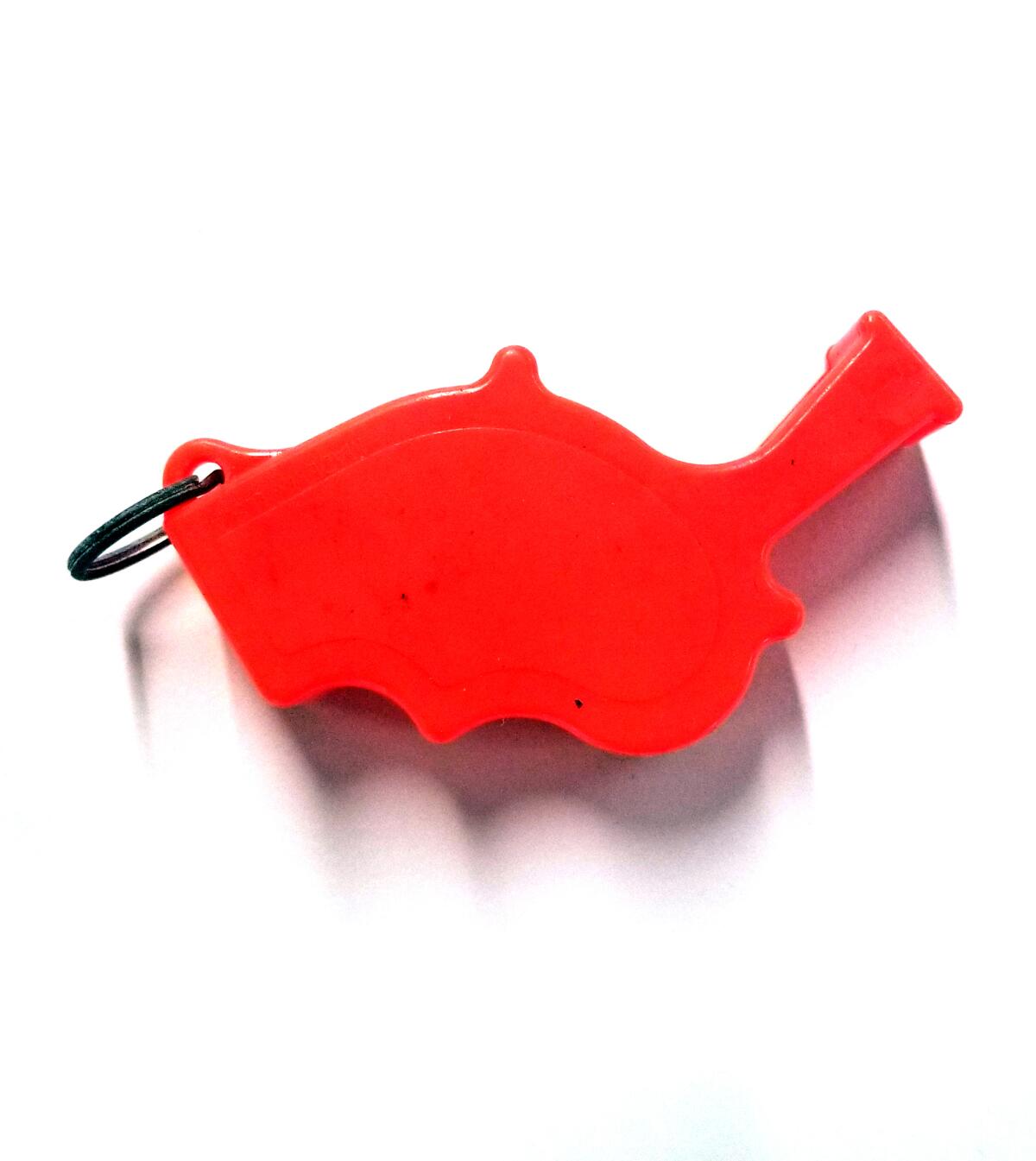
3. Be visible. Help searchers by making yourself visible — and audible. “Blow a whistle,” Fortini says. Voices give out eventually, but “you can blow very loud. We blow whistles too. So whistle back for us.” Blasts of three signal an emergency. Air searchers may be on the way, and wearing bright clothing can be a big help. If you can’t see a helicopter, it can’t see you. “Get out into an opening where you can see the sky,” Fortini says. “Make yourself big. If you see a helicopter coming, lie down and make like a snow angel.”
4. Light signal. If it’s dusk or dark, you might wonder about making a signal fire. Given California’s extreme fire conditions, experts get queasy at recommending this. (The 2003 Cedar fire, which burned more than 200,000 acres in San Diego County, was caused by a lost hiker’s would-be signal fire.) A headlamp or flashlight is a better, safer solution. “To a pilot with night-vision equipment,” Fortini says, “that headlamp looks like a huge strobe beacon.” Night-vision goggles can even pick up the glow of a cellphone from many miles away.
5. The essentials. Food and water might be a concern while you’re awaiting rescue, but “searches that go beyond one or two days are extremely rare,” Fortini says. You can survive many days without food, and a few days without water. Look for water at the bottom of a canyon, and if you find it, go ahead and drink it, even if you didn’t bring a purifier.
6. Return to the open where you can be seen. Remember to make yourself as visible as possible. Staying down by a stream will make you hard to find, and rushing water may mask the calls of rescuers.
More to Read
Sign up for our L.A. Times Plants newsletter
At the start of each month, get a roundup of upcoming plant-related activities and events in Southern California, along with links to tips and articles you may have missed.
You may occasionally receive promotional content from the Los Angeles Times.

